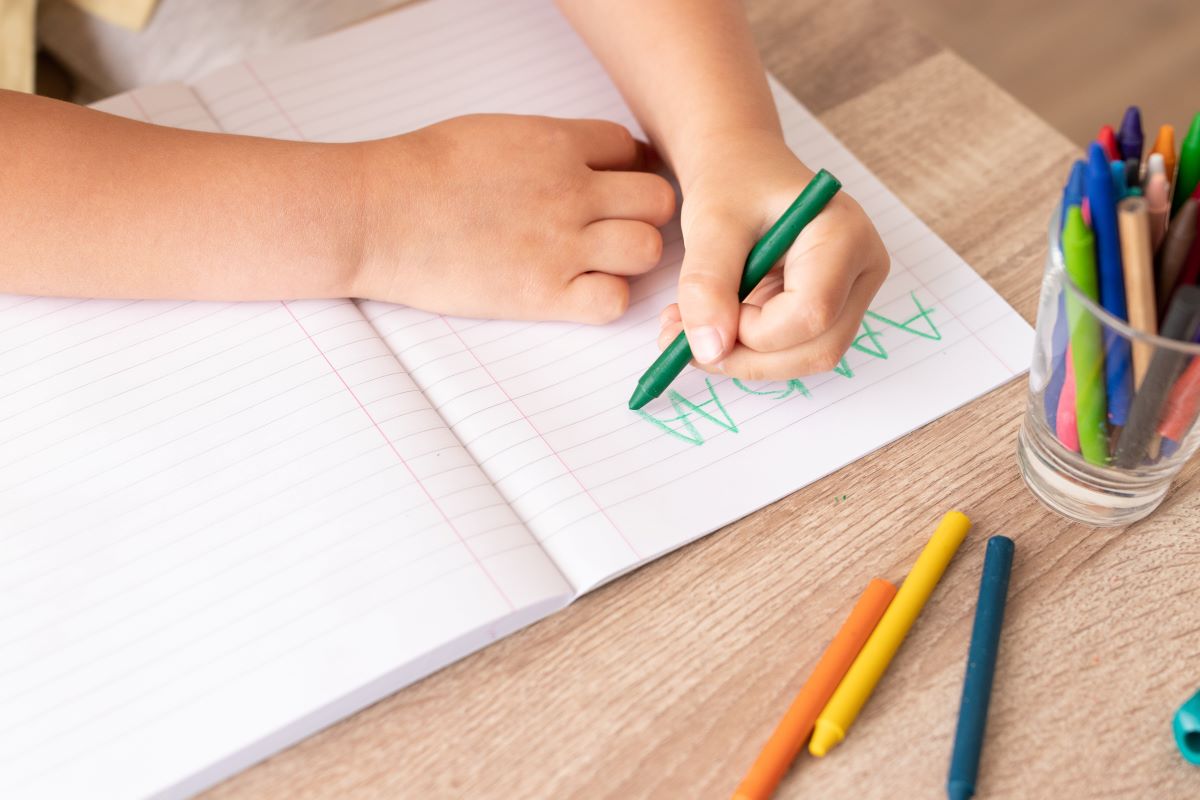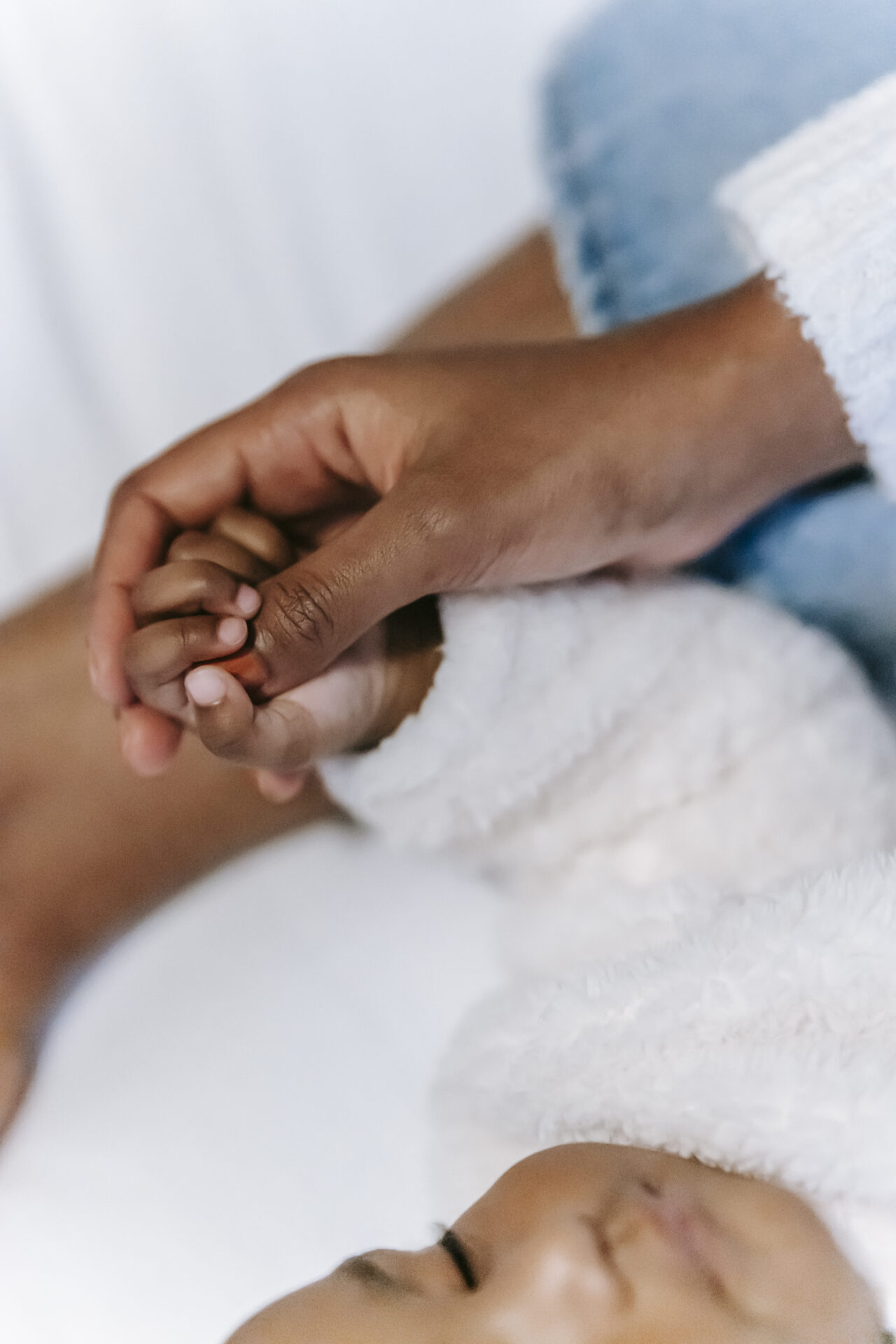Final spurt! Soon it will be time and you can finally hold your baby in your arms. What do contractions feel like? Can you encourage contractions in the 40th week? And what do you need to pack in your hospital bag? We’ll tell you all about that and much more here.
Table of contents
Important facts about the 40th week: What you should know
You are full of anticipation and want to finally hold your baby in your arms, but the little one is still waiting. If at all, you should only think about promoting labor now, in the 40th week.
However, you should only do this after consulting your doctor or midwife. They will know which methods are right for you and when it is certain that you and your baby are fit and ready.
Gentle ways to induce labor in the 40th week include an abdominal massage or a warm bath with oils. Allow the little one some more time in your belly and don’t put yourself under stress.
This is what happens to you
With the 40th week of pregnancy you are officially in the last week of pregnancy. Behind you lies a beautiful, but also exhausting time for your body. In the 40th week your baby is fully developed – your body has achieved this miracle.
Soon it will perform another miracle: The birth. In the 40th week it can be any moment. In this section you will learn what helps against pregnancy discomforts and when it makes sense to promote labor.
Tip for fathers-to-be
If your baby is not yet born, it won’t be long before the time comes. Seek physical contact with the newborn so that he recognizes not only the familiar voice of the mother, but also that of the father.
Pregnancy symptoms in the 40th week of pregnancy and what you can do about them
Most women are spared pregnancy discomfort in the 40th week of pregnancy – but not all. So that the annoying discomforts do not cloud the anticipation of your baby, you will learn the best tips against discomforts in the 40th week here.
Nausea and vomiting
Nausea and other symptoms usually occur in the first trimester. About 80% of women suffer from a sinking feeling in the stomach during their pregnancy. If you still suffer from nausea in the 40th week of pregnancy, we have the following tips for you:
- Get enough sleep
- A small snack before going to bed
- Snacks in the morning
- Many small meals
- Ginger (as tea or sweets for in between)
- Drink a lot
- Avoid strong spices and greasy food
Tightness in the breasts
A feeling of tension in the breasts is no cause for concern. What is important now is that you wear a well-fitting bra that does not cut into your breasts.
If the tension becomes too intense, quark compresses or cold compresses can help. Some women also benefit from heat. In this case, you can gently massage your breasts with warm oils, for example.
Back pain
Are you suffering from back pain during the 40th week?
No wonder, because the weight of your baby is causing your back a lot of trouble. Swimming or pregnancy gymnastics can work wonders.
Stretch marks
How pronounced stretch marks can be depends on your connective tissue. However, it is super helpful if you regularly apply cream to your skin. This way you can optimally support the stretching process.
Water retention
Especially in the last trimester of pregnancy, many pregnant women suffer from swollen ankles caused by water retention in the tissue (edema).
Harmless edema disappears after a warm bath or by putting your legs up.
If water retention persists despite these measures, you should consult a doctor to rule out gestational gestosis, which is associated with high blood pressure, edema and increased protein excretion.
Our tip: Use the so-called “vein pump“: Vigorously flex and extend your feet while sitting with your legs elevated. This stimulates the blood flow.
You should know these different types of contractions
In the 40th week of pregnancy it can happen at any moment. You feel a pulling in your belly and panic? Are you in labor or not?
There are different types of contractions, which we would like to introduce to you in this section. This will help you to better assess what is happening in your body.
What do we actually mean by contractions?
Contractions are contractions of the uterine muscles that are triggered during pregnancy and birth.
But not all contractions are the same. They differ depending on the phase of pregnancy or birth.
Each type of contraction has a different function. Your body is prepared for the upcoming birth or the birth is advanced by means of a contraction.
You will clearly feel that they differ in intensity and frequency.
Since every woman feels pain differently, it is not always easy to separate the individual contractions from each other. Nevertheless, it can be helpful to know the characteristics of the different types of contractions.
Note: Not all contractions are necessarily a signal that labor is starting. Learning to distinguish between the different types of contractions can give you confidence.
It can also help you to know when it is time to go to the hospital.
Early labor/preterm labor
Contractions that can occur before the 36th week of pregnancy are called early labor or preterm labor.
You can recognize them by the fact that they occur with more than three contractions per hour. The intervals are relatively short and the pain gets progressively worse.
These contractions may be accompanied by watery or bloody discharge. Caution is advised in early labor. You should always inform your doctor or midwife if you experience premature contractions.
Contractions are not always a sign of premature birth. Nevertheless, premature contractions are often a warning signal from your body and a sign that you should allow yourself rest and relaxation.
Your doctor will probably recommend magnesium, which has an antispasmodic effect, for premature contractions.
If there is otherwise a risk to you or your baby, he or she may also give you a contraceptive to curb the contractions.
Practice contractions
Practice contractions, or Braxton Hicks contractions, usually occur several weeks before birth. Although it certainly feels unusual at first, the contractions are quite normal and no cause for concern.
Beginning in the second trimester, around WOP 20 to WOP 35, your uterine muscles “train” in preparation for birth
. Contractions occur irregularly and last between 30 seconds and one minute.They are not painful, so some moms-to-be are not even aware of them. You may feel your abdomen become hard and then relax again a short time later.
If they occur more frequently than three to four times an hour or more than ten times a day, or if they are accompanied by discharge or bleeding, you should contact your doctor or midwife.
Preterm labor
Preterm labor usually occurs from the 36th week of pregnancy. They prepare your body for the upcoming birth. You can recognize preterm labor because it occurs at irregular intervals and is relatively painless.
You may feel them as a sharp pulling sensation in your back and/or increased pressure on your bladder.
Descending labor
Often, preterm contractions merge seamlessly into your descending contractions. Their purpose is to bring your baby’s head into your pelvis and thus into a birth position. Descending contractions can also occur from around the 36th week of pregnancy.
In contrast to preterm labor, these contractions are much more painful.
If the growing baby bump causes you problems when breathing or eating, the contractions and the changed position of your baby can provide you with relief.
Promoting labor in the 40th week of pregnancy: When does it make sense?
The expected date of birth has been reached, but your baby is still waiting? In this case, there are certain tips and tricks on how to promote your contractions.
When should labor be encouraged and when not?
You are in the 40th week of pregnancy and nothing has happened yet? Ask your doctor or midwife about suitable means to promote labor.
Important: Under no circumstances should you stimulate your contractions without consulting your doctor. In general, labor should not be promoted before the 40th week of pregnancy.
Promoting
labor: How does it work and what techniques are available?To promote your contractions in the 40th week, there are certain means.
Acupuncture by the midwife
Many midwives recommend acupuncture to prepare your body for birth and get labor going.
You can even start acupuncture a few days before your due date and have several appointments.
Through the use of thin needles, specific points are stimulated to get your uterus going and ensure that the birth goes more smoothly.
Labor cocktail
A labor cocktail is a mixture that is usually enriched with castor oil. This is intended to stimulate the intestines and thus promote labor.
The cocktail should only be prepared by a midwife and taken under her supervision.
It is controversial today whether it is really necessary, as the laxative can weaken the body. In addition, it can happen that uncontrollable continuous contractions occur.
Therefore, inform yourself about possible side effects before taking it and have your midwife check whether a labor cocktail can help you.
Tampon with clove oil
This tip should never be done alone. Talk to your midwife first. She can help you find the optimal dosage.
Important: Not everyone tolerates clove oil. So first test on your hand whether you also accept the mixture well and nothing burns and no red spots form.
A mixture of 30 ml almond oil (or sunflower oil) and 50 drops of clove oil is optimal. Then put five to six drops of this mixture on the tampon and insert it.
If the tampon causes a burning sensation, you should remove it immediately. Always stay in contact with your midwife and inform her that you are using a clove oil tampon.
This is what happens to the baby
In the 40th week your baby is about 48 to 56 cm tall and weighs 3400 g.
This makes the little one about the size of a small pumpkin.
How your baby develops during the 40th week of pregnancy
In the 40th week, your baby is already so big that it has to bend its arms and legs to fit into your belly. The largest part of the baby’s body is the head, with a circumference of around 35 cm.
To make it fit more easily through the birth canal, the individual bones of the unborn baby’s skull have not yet grown together.
This is called the fontanelle. During birth, they can thus shift slightly, which reduces the circumference of the head during birth.
Some babies are therefore born with a “crooked” head. Usually, this deformation disappears on its own within the first days of life.
This is important now
Women who consciously prepare for their birth usually experience it in a more relaxed way. In the following section we have summarized the best tips for you.
40. WOP: How you can prepare for the birth
Choosing the right place for the birth
Where do I actually want to bring my baby into the world? The question of where to give birth is important when it comes to preparing for birth.
Some women prefer to go to a clinic, while others prefer the private atmosphere of a birth center. A tour of both helps to get a better idea of everything.
How should the birth proceed?
The exact course of a birth can never be predicted. But thinking about it in advance can contribute to a relaxed experience.
It is helpful to ask yourself the following questions and talk about them with your doctor or midwife:
- Do I prefer to lie in bed or sit on an exercise ball or walk around?
- Do I need music to help me relax?
- Do I want to take a bath before giving birth?
- How much midwife support will I need? Do I prefer to be left alone for a large part of the time to be completely with myself?
- Which exceptional situations scare me?
- What medical interventions do I want to allow if my or the baby’s health is in danger?(PDA, episiotomy, forceps delivery, suction cup, cesarean section)
- As a patient, which medical procedures may I also refuse? (precautionary placement of an access, precautionary epidural, etc.)
What needs to go in the clinic bag?
Sometimes everything goes faster than expected and labor starts.
We have put together a checklist for you so that you don’t have to worry about what you need in your hospital bag.
Important documents
- Admission slip for the hospital
- Maternity passport
- Health insurance card
- Identity card or passport
- Married persons: family register or marriage certificate
- Single persons: birth certificate and, if applicable, acknowledgement of paternity
- Allergy passport if required
- Optional: Birth plan
For you
- Bathrobe
- Comfortable clothing
- Slippers
- Warm socks
- Old nightgown or T-shirt for the birth
- 7 loose underpants or disposable briefs
- 1-2 nursing bras(2 sizes larger than normal)
- Nursing pads
- Absorbent pads
- Sufficient snacks & drinks for refreshment
- Hair band if necessary
- Washing utensils
For the baby
- 2-3 size 50/56 panties/ rompers
- 2-3 shirts size 50/56
- 1 light cotton cap
- 1 package of diapers size 1
Midwife Tip
Your baby decides when it wants to be born. The possible birth period is correspondingly large. If the check-up shows that you and your baby are doing well, you can allow your offspring the entire 40th week of gestation and even up to ten days more than the expected date without having to worry.
FAQ
In the 40th week of pregnancy, the time can come at any moment. The best thing to do now is to prepare yourself for the upcoming birth.
Acupuncture, gentle massage or a labour cocktail can induce labour in the 40th week of pregnancy.
There are many different types of contractions. You can read about what they feel like in this article.
As soon as you notice signs of a birth, you should make your way to the hospital.
Your doctor can use an ultrasound to determine the position of your baby in the 40th week.
In the 40th week your baby is completely developed. During contractions, the uterus contracts strongly and your abdomen becomes hard.
If you are not yet in labour in your 40th WOP, you should not worry. There are many techniques to encourage labour naturally.
40th WOP videos
Join Jessica and Brittany in her 40th week of pregnancy and learn more about birth signs and final preparations for the birth.









